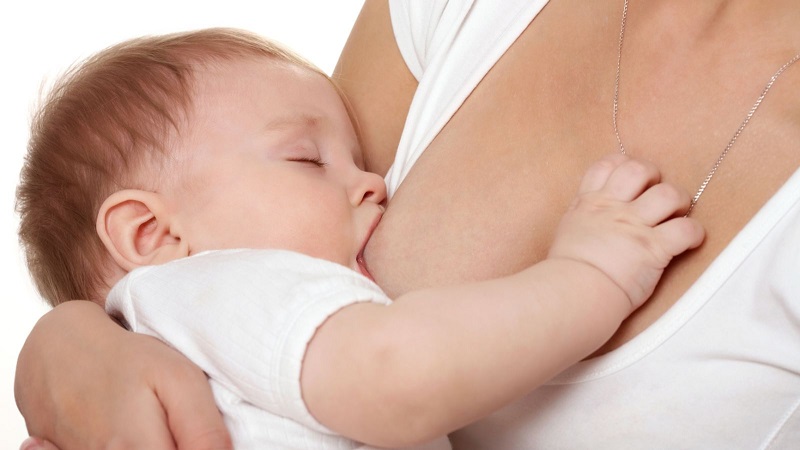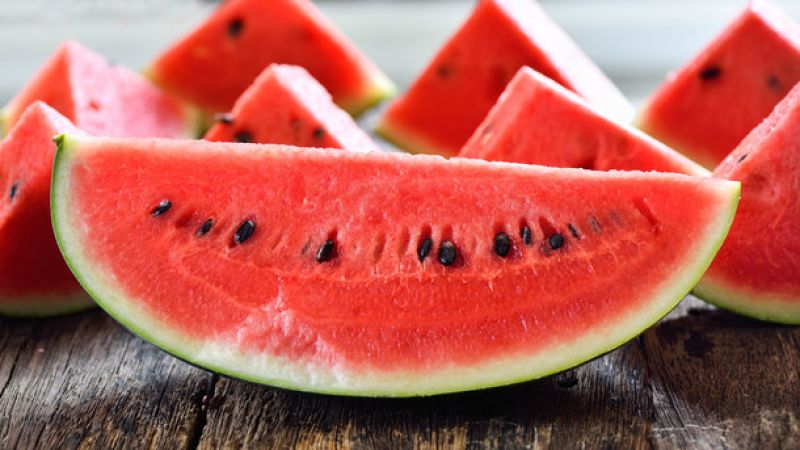Is it possible to breastfeed watermelon: harm and benefit for a nursing mother and baby
The refreshing taste of watermelon helps to survive extreme heat, and the juicy pulp perfectly quenches thirst. However, many are afraid to buy the berry because of the frequent cases of poisoning after eating it. It is important for a nursing mother to know if watermelons can be breastfed, and if so, in what quantities and how to choose a quality product. This will be discussed in our article.
The content of the article
- Is it possible to breastfeed watermelon
- The benefits and harms of fruits for a nursing mother and baby
- Watermelon when breastfeeding, depending on the age of the child
- Rules and norms for the consumption of berries
- To whom is watermelon contraindicated?
- Precautions when choosing fruits
- The opinion of Dr. Komarovsky
- Conclusion
Is it possible to breastfeed watermelon
The share of water in watermelon is 91.5% by volume. As it grows, the berry, like a sponge, absorbs useful and harmful substances from the soil. The plant is responsive to feeding, which is used by some growers.
The increased amount of nitrogen fertilizers contributes to the rapid growth and early ripeness of the berry. However, at the same time, the watermelon accumulates a large amount of nitrates, which gradually turn into nitrites, dangerous for humans. As they mature, nitrous acid salts are converted into sugars, amino acids and fiber.
That is, a ripe fruit is safer than an unripe one.

Important! Nitrates are found in fruits and vegetables with a high water content. In this sense, melon is safer than watermelon.
Nitrates penetrate into breast milk, negatively affect the baby's body. A nursing mother needs to choose only high-quality seasonal vegetables and fruits.
In case of nitrite poisoning, characteristic signs of intoxication are observed:
- nausea, vomiting;
- diarrhea;
- temperature increase;
- in difficult cases - loss of consciousness, convulsions.
Nitrites interfere with the supply of oxygen to tissues, and when used regularly in childhood, they prevent the body from growing and developing properly.
The arguments “for” and “against” the use of watermelon while breastfeeding are presented in the table:
| pros | Minuses |
|---|---|
| Contains vitamins, trace elements, antioxidants | Contains dangerous amounts of nitrates and other harmful substances |
| A large amount of juice contributes to the intensive production of breast milk | Causes fermentation and colic processes |
| Low calorie product | Contains allergens |
| Restores water-salt balance, helps to survive hot weather | Not recommended for chronic diseases of the urinary system |
| Has a refreshing, pleasant taste | Too much fluid causes milk flow and breast congestion |
| Normalizes stool for constipation | |
| Improves the condition of blood vessels, normalizes blood pressure | |
| Removes toxins and toxins |
The benefits and harms of fruits for a nursing mother and baby
The main harm of watermelon is that the berry intensively absorbs not only useful, but harmful substances from the soil. The abundance of juice causes the processes of fermentation and gas formation, becomes the cause of exacerbation of diseases of the urinary system.

However, the benefits of watermelon for HS are also great. It contains the following substances:
- vitamins of group B, A, E, C;
- minerals - phosphorus, calcium, magnesium, potassium, sodium;
- a large amount of delicate fiber;
- pectin;
- folic acid;
- lycopene and other antioxidants;
- the amino acid citrulline.
The rich scarlet color of the pulp is due to the high level of lycopene in the composition. This antioxidant has a beneficial effect on the work of the cardiovascular system, reduces the risk of oncological diseases, and relieves bronchial asthma. Together with vitamins A and E, it protects the eyes from age-related changes.
Citrulline is converted into arginine in the body, which increases the efficiency of the immune system. Folic acid has a beneficial effect on the development of the brain of an infant. Watermelon juice perfectly quenches thirst and serves as a diuretic.
Read also:
Can I eat potatoes while breastfeeding?
Watermelon when breastfeeding, depending on the age of the child
A baby is born with an immature digestive system. It is important for a nursing mother to find a safe and balanced diet for herself. It is better to try new products in small portions, gradually increasing them.

In the first month
Immediately after the birth of the baby, you should not try the watermelon. The fruit, like other brightly colored vegetables and fruits, can cause allergies. A newborn baby is especially sensitive to nitrites and other harmful substances that berry may contain. Even in small concentrations, they will cause poisoning.
In the second
A two-month-old baby is gaining weight intensively and developing rapidly. During this period, his digestive system is getting better. Try a small amount of watermelon pulp that you are sure of. In the absence of an allergic reaction, diversify the menu with a slice of berries as a sweet dessert.
Into the third and beyond
In the absence of a negative reaction, the mother is not prohibited from indulging herself with a small amount of watermelon. However, overeating will have to be abandoned. The pulp with a lot of juice starts the fermentation processes, causes stool disturbance and colic in the baby.
Rules and norms for the consumption of berries
Watermelon is consumed in two ways:
- 1-2 slices as a dessert after the main meal;
- separate from the rest of the food until you feel full.
When consumed in large quantities, watermelon has a diuretic and laxative effect, so it is best to eat it in the morning or afternoon.
Important! It is not recommended to combine watermelon with salty foods. Large amounts of fluid and salt will cause swelling and increased pressure
To whom is watermelon contraindicated?

You will have to completely abandon the watermelon if you are allergic to the fetus.
Limit the use of berries for the following diseases:
- type 2 diabetes mellitus;
- urolithiasis;
- ulcers of the stomach and duodenum;
- colitis, flatulence;
- intestinal infections.
Watermelon is harmful in large quantities for children under three years old and pregnant women.
Precautions when choosing fruits
Consider the seasonality of the plant when choosing a watermelon. In Russia, berries ripen en masse in August. There are early ripening varieties that yield a harvest 70-80 days after germination, therefore they are edible in July. However, these fruits are difficult to distinguish from fertilized watermelons.
Helpful! Crush a small piece of pulp and swirl in a glass of water. A dangerous fruit will color the liquid in an intense pink or red color, and naturally grown in a pale pink.
It is important to choose the place of purchase. It is better to bypass unofficial points of sale and vegetable breakdowns. The fruits should not lie on the ground under the sun.
Recommendations for choosing a watermelon:
- the main sign of maturity is a dry tail;
- buy medium-sized berries - 4-6 kg, too small may turn out to be unripe, huge ones - grown with the help of fertilizers;
- the skin should be intact, moderately glossy, with a contrasting pattern, without dark spots, dents and soft spots, and the yellow spot should be clear;
- it is dangerous to buy a cut watermelon - there is a high risk of getting an intestinal infection.

Wash the watermelon thoroughly before cutting. Pay attention to the pulp and bones.The healthy pulp is red, slightly loose, of a sugar consistency, with thin white veins. Whitish, bright red with a purple tint, glossy core and yellow streaks are a danger sign. White bones indicate an unripe fruit.
Nitrite accumulates closer to the peel. You should not completely eat the crusts up to the white layer, it is better to stop as soon as the pulp becomes savory. At home, a nitrate meter is used. To do this, cut the watermelon and stick the needle of the device into the pulp.
Interesting. Watermelons are classified into male and female plants. The latter are believed to be sweeter and more juicy. Fruits-girls have a wide dark speck from a flower, and boys - a small one.
The opinion of Dr. Komarovsky
Evgeny Olegovich Komarovsky, a renowned pediatrician, recommends eating high quality ripe fruits during lactation. A mother should not eat watermelon immediately after purchase. First, you need to treat your dad to and monitor his health. If the berry does not cause poisoning, you can also eat it for mom.
If the pulp after cutting is tasteless, then it is better not to regret the money spent and throw the fruit away.
Conclusion
Watermelon is included in the diet of a nursing mother closer to 3-4 months. They use only high-quality berries ripened in August - September. The main indicator of maturity is a dried tail. Check the safety of the product using a nitrate meter. An absolute contraindication to use is allergy.